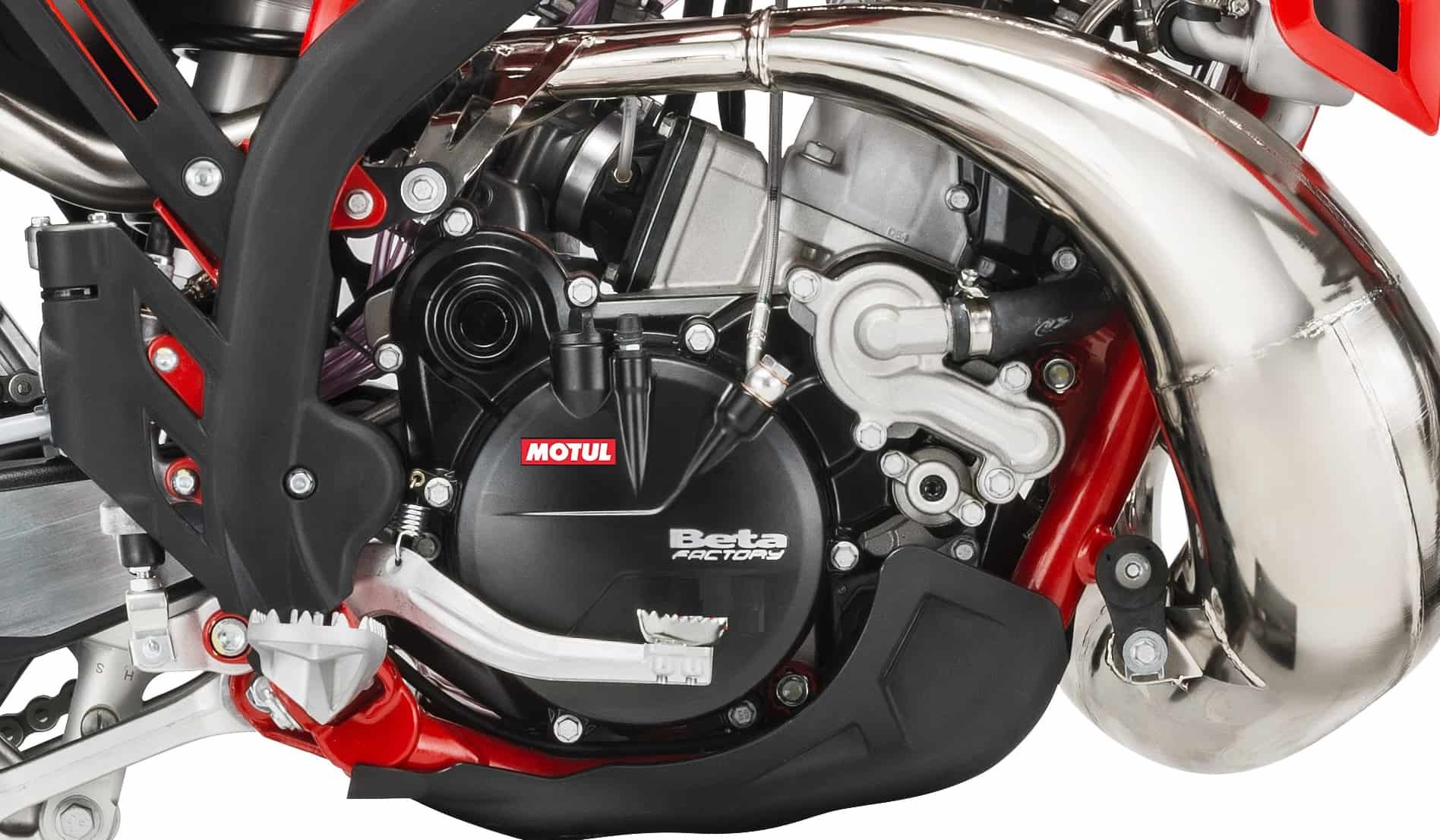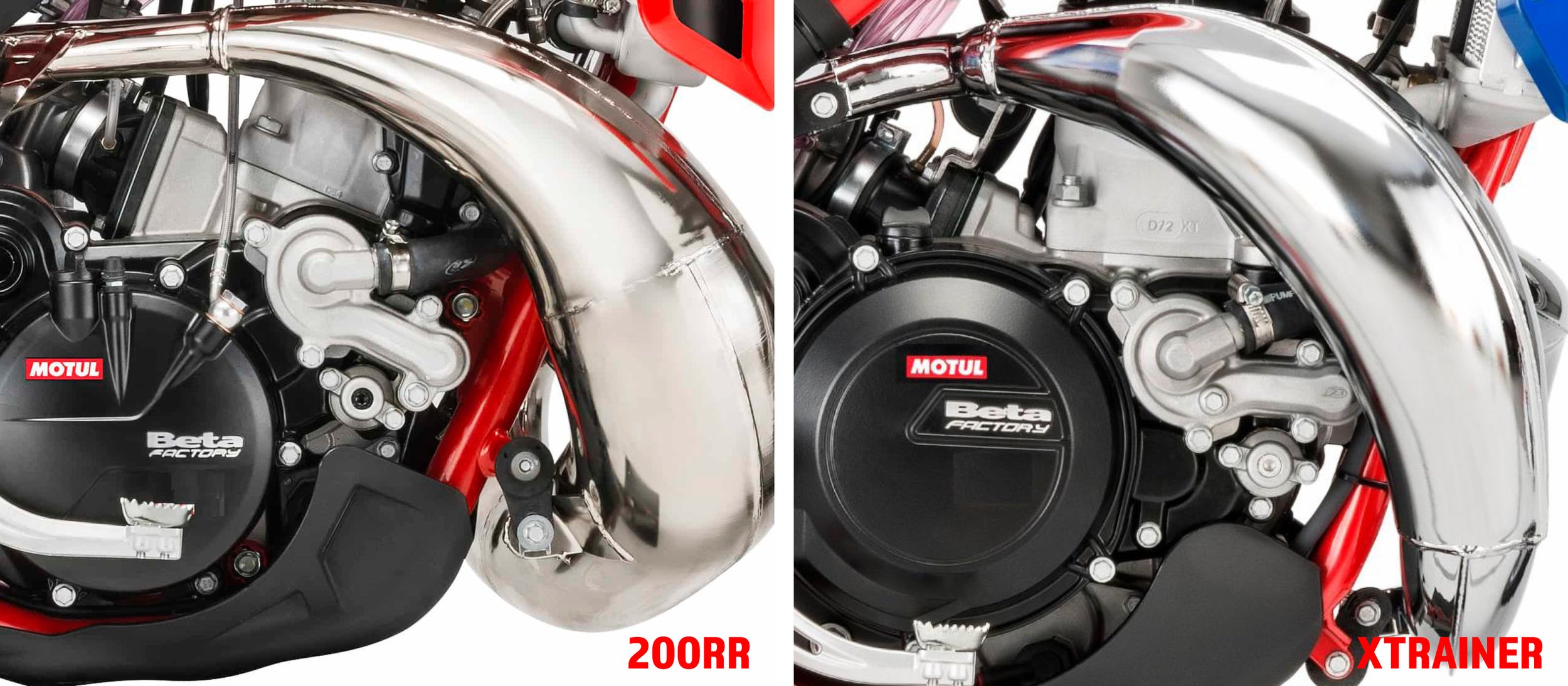Two-Stroke Riding Tips
We are always excited for ladies to test ride a Beta 200rr or Xtrainer 300 at our East Coast woods and enduro event because these are two excellent bikes for riders of technical terrain who also may be moving up from small wheels to full size wheels, benefit from a lower seat height, or who may be venturing into more technical terrain and need to keep the bike weight minimal, hence opting for a two-stroke.
In this post, we aim to give some 2-stroke specific riding tips you can put to work any time, but especially when demo-ing a new Beta 200RR or Xtrainer 300 at Over And Out!
2-STROKE VS 4-STROKE
First, this is not a 4-stroke hater post; there’s a lot to love about both 4-stroke and 2-stroke bikes. 4-strokes are awesome for all of their own reasons. They have a more steady, linear power delivery and ability to lug the engine at low speeds. This is particularly crucial in woods riding, which is why I recommend new riders start on a smaller 4-stroke and ride those bikes ‘til the wheels fall off!
However, 4-strokes are typically heavier, so one of the reasons a 2-stroke may become appealing for woods riders in particular is because they are lighter weight, potentially more easily maneuverable or “flickable”.
The two Beta models available for demo at OAO are perfect options for technical terrain, which is why we’re so stoked to get more girls on these bikes! They also both happen to be 2-strokes.
Read on to learn a few things about riding a 2-stroke that you’ll be able to put to work on the Beta 200RR and Xtrainer!
POWER DELIVERY
One notable trait of most 2-strokes is the powerband. The powerband generally kicks in at higher RPMs (when the bike is “revved high”) compared to a 4-stroke. Check out this very unofficial, highly generalized graph illustrating the difference between the power delivery of a 4-stroke vs 2-stroke.
4-strokes generally give you more low-end torque, more power at low speed and low RPM, while typically 2-strokes are optimal when ridden with a “wide open” throttle, meaning being fully on the gas. Rolling at slower speeds is easier on a 4-stroke, whereas with a 2-stroke you’re more likely to stall out in that situation.
So, If you’re either a newer rider who likes to go slower, OR if you’re riding in very tight, technical or rocky terrain you might want something that offers you that low-end torque, low-end “grunt”.
2-strokes can be tuned to have a smoother power delivery, and the Betas are known for this. The 200RR gives you great low-end but has plenty of power at higher speeds too, making it a great bike for intermediate through expert riders alike.
The Xtrainer is particularly known for (and designed for) agility at slow speeds. One important factor of the Xtrainer’s engineering is the narrow shape of the expansion chamber of the pipe. This contributes to providing more torque and seamless power delivery.
TIP: If you’re intimidated by the level of power the 200RR has, you can try riding it first with the traction control on “Rain”. Beta has a traction control switch that adjusts for more slippery rain conditions vs sun. The Rain mode makes the power transfer to the tires just a tad softer. Once you’re comfortable, try flipping it to Sun.
USING THE CLUTCH
New riders have certainly learned that the clutch is used to shift gears, and riders with even a little experience should know just how active you need to be on the clutch as you’re going through turns, downhills and other changes in terrain. On a 2-stroke in particular, the clutch is something that is used very actively.
As we mentioned in the first section, 2-strokes run optimally in higher RPMs, and if you can’t actually GO faster, you can increase the RPMs by feathering the clutch. Feathering the clutch means pulling it in partially, not fully disengaging it, but just to the point where it forces the RPMs to rev.
Feathering the clutch becomes an essential technique on technical terrain, helping to pull you through choppy uneven terrain like rock gardens, helping to pull you up-hill and helping to increase speed without solely using the throttle.
TRY IT OUT: Even on flat ground, you can play with feathering the clutch. When you’re on the demo loop, give it some gas but hold the clutch right at the point of engagement and feel it pull the bike forward. Try this same technique on an uphill and feel the bike pull up hill.
MIXING GAS
With 2-stroke bikes, rather than putting in straight gas, you mix oil into the gas at a specific ratio. This is because that oil/gas mixture feeds straight to the engine where the oil is burned off in the combustion process. This burned off oil is what creates the smoke that comes out of the pipe.
BOTH the Beta 200RR and the Xtrainer have convenient oil injection! This means that rather than having to add the oil to the gas yourself (in the gas canister), you simply install the oil under the seat of the bike, and it injects it into your gasoline for you. It even adjusts as you ride in order to optimize the ratio for best burning, hence best power.
This eliminates any worries about proper pre-mixing, mixing up gas cans, and it makes it easy for you to gas up right at the pump if you’re on a dual sport ride.
2-STROKE SMOKE
Something people don’t always explain to new 2-stroke riders, however, is that if you aren’t burning all that oil off, it can clog things up and cause you to stall a lot. It’s crucial to burn off that oil and blow out that smoke, and this is done by riding in high RPMs (whether by going fast, or by using the clutch to rev up the engine).
TIP: If you are not yet at the point where you can ride the bike fast enough to burn off all the oil, you can and should just pull in the clutch in and rev the engine high once in a while. You don’t have to do it excessively. For example, I will typically take advantage of any long downhills in the woods to do this. As I’m cruising down-hill I take the opportunity to pull in my clutch and blow out the smoke just a bit.
We’ve had Beta bikes available for demo at our Tamaqua event for the past few years thanks to Beta and RyanCo Cycle. We highly recommend these two models for technical East Coast riding, especially if you are vertically challenged. So check them out at the next OAO, take some of these tips to heart, hand HAVE FUN!







